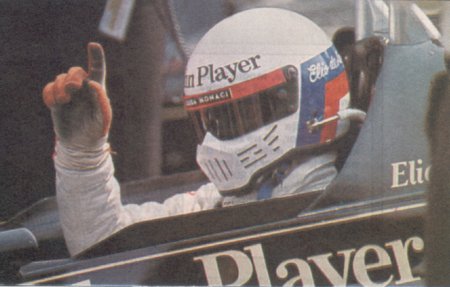Before the... bell rings, please wait to see some results of the pure convex diffuser..
- Login or Register
No account yet? Sign up
hardingfv32 wrote: If you actually have any idea what you are talking about, please relate it to the images that have been posted. Just pick one or two of the many variations you say are possible and explain how they apply. Demonstrate that anything you have mentioned is relevant to the discussion.
The percentages are based on observation of many views of the RB7 Monza diffuser.Tozza Mazza wrote:Those percentage figures you have Brian seem quite precise.
Where did you get them from?
Can you draw out this profile inside a box 350mm long and 125mm (75mm from step plane) high?



hardingfv32 wrote:
This is my estimation of the RB7 Monza diffuser floor. The initial surface could actually be straight with a curved transition to the next straight section.
Added the curved "Gurney" that is now in vogue. I believe it can be 20 mm above the dimension box, but I have no idea how far forward it can extend.
A chicken and egg type question: Is the convex shape at the end more important to the flow above the diffuser floor (roof) or the flow below it?
Brian
How is it biting off more than you can chew when it is very much relevant to the functionality of the diffuser? Like I said before, beginning with the simple model is the definitely best place to start, and then adding complexity to either address an issue or as the simple components become better understood. In this case, we saw an issue with flow separation, so the beam wing was suggested as a way of addressing that issue without sacrificing the aggressiveness of the diffuser profile.ringo wrote:You guys biting off more than you can chew with beam wings and what not.
Just take it easy and focus on the diffuser alone.
Why i say that is that jumping into beam wings and wheels before we even fully understand what the diffuser has to do to perform optimally can be seen as glossing over the subject without grasping it fully.Mystery Steve wrote:How is it biting off more than you can chew when it is very much relevant to the functionality of the diffuser? Like I said before, beginning with the simple model is the definitely best place to start, and then adding complexity to either address an issue or as the simple components become better understood. In this case, we saw an issue with flow separation, so the beam wing was suggested as a way of addressing that issue without sacrificing the aggressiveness of the diffuser profile.ringo wrote:You guys biting off more than you can chew with beam wings and what not.
Just take it easy and focus on the diffuser alone.
It's not like we have a deadline to meet here; we just want to systematically learn the fundamental physics of F1 cars, which includes the beam wings as they are clearly an important component of the car. If they weren't, we wouldn't see the unusual McLaren sidepod design or the "coke bottle" sidepods.











